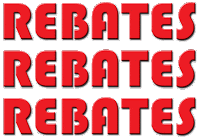Solution Selling means the Whole Solution – Distributor Evolution
 Nearly 20 years ago a friend made this comment: “(Industrial) customers don’t want to buy electrical products, they want to buy solutions. If you only sell half of the solution, it’s not really a solution-- it’s a bag of parts.”
Nearly 20 years ago a friend made this comment: “(Industrial) customers don’t want to buy electrical products, they want to buy solutions. If you only sell half of the solution, it’s not really a solution-- it’s a bag of parts.”At the time, I was squarely in the center of the electrical automation business. And, like most salespeople, everything I didn’t sell was invisible. On a purely intellectual basis, I realized the PLCs, drives, sensors and motion control systems I sold were connected to something, but emotionally, I didn’t care. I had my bag of tricks and my team was better equipped to assist in project layout, troubleshooting and advanced support than any other electrical distributor and I was fat, dumb and happy. But my eyes were opened.
I lost an order. After the fact, my customer was kind enough to explain the reason why. It seems he felt the mechanical portion of the order was more complex than my fancy sensors. The competitor sold both and during the discussion of the mechanics, he convinced the customer that sensor placement required knowledge of the limitations of the mechanics. He knew about both and would solve the whole problem. It was a déjà-vu moment. It ruined my day, and as I made the trip back to the office, my buddy’s comments banged around in my brain.
I was convinced. I immediately started scanning the horizon for products just outside my selling sphere of influence. I began to realize the need for an understanding of my product’s place in the solution. And, most importantly, I started to explore plans for expanding my percentage of the customer’s total solution.
Since founding River Heights Consulting, I have explored and written about the need for distributors to broaden their product scopes into the whole solution. A few progressive distributors have followed this path. From my point of view, Fluid Power distributors have made the greatest progress; perhaps they were scared into making the move.
Recalling back to the 1990s, fluid power distributors faced-off against massive technological gains in the electronic world. Many of the traditional applications for their motion-centric hydraulic products were being challenged by less costly and feature rich electronic offerings. Many pundits heralded the end of their industry. Scare tactics from experts and feedback from customers drove many of them to develop expertise in motion control outside of their normal portfolio of products. Distributors evolved.

Conjuring up the words of Theodore Levitt, “What business are you really in? The railroads let others take customers away from them because they assumed themselves to be in the railroad business instead of the transportation business.” As distributors we must ask ourselves what business are we in.
Most distributors claim to be in the business of providing customers with solutions. Yet, most limit their solutions to advice and services wrapped around a bundle of products. Progressive distributors view the solution as whatever it takes to really fix the problem.
What should you do? Here are six thoughts to explore:
1. What are the limits of your solutions?
2. What products are invisible to you and your sales team? Just because you don’t sell it doesn’t mean your customers don’t need it.
3. Are there technologies not found on your “linecard” which are commonly used to create the total solution?
4. Do you see competitors with broader based solution capabilities than your organization? Are you willing to eventually hand over your portion of that solution?
5. What technologies (and product sets) will be important to your customers in the future? Will these technologies absorb some of the applications you currently support?
6. Have you asked your customers where they need additional solution support?
Finally, here are a couple of pieces of news:
Cincinnati-based CBT was recently recognized as joining the Top 50 list of Industrial Distributors. CBT used to be called Cincinnati Belt and Transmission. The company now carries a complete line of electrical, automation, pneumatic and power transmission products as well as their old standby belts and conveyor offering.
A recent article in Fluid Power World highlighted the Flodraulic Group. A quote from Bill Tulloch summarizes my
whole point:
“A good industrial distributor now has to integrate multiple technologies. He may be bringing to that customer pneumatics and hydraulics of course, but you’re bringing mechanical, you’re bringing electrical and controls. You have to understand PLCs and how that will control his equipment.”
Read the article here:
Space and time limitations keep us from exploring dozens of other examples. The point is, morphing to match customer needs makes sound business sense.





Comments